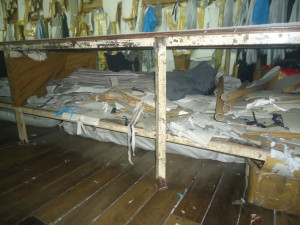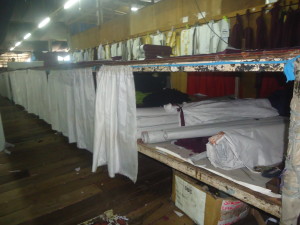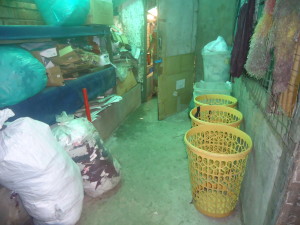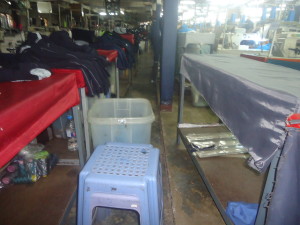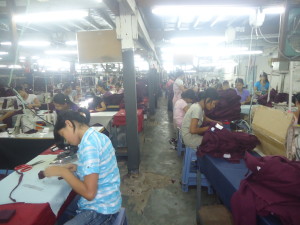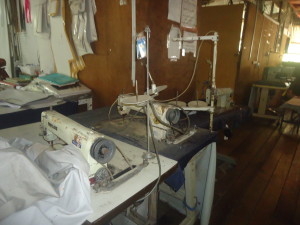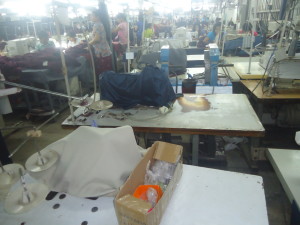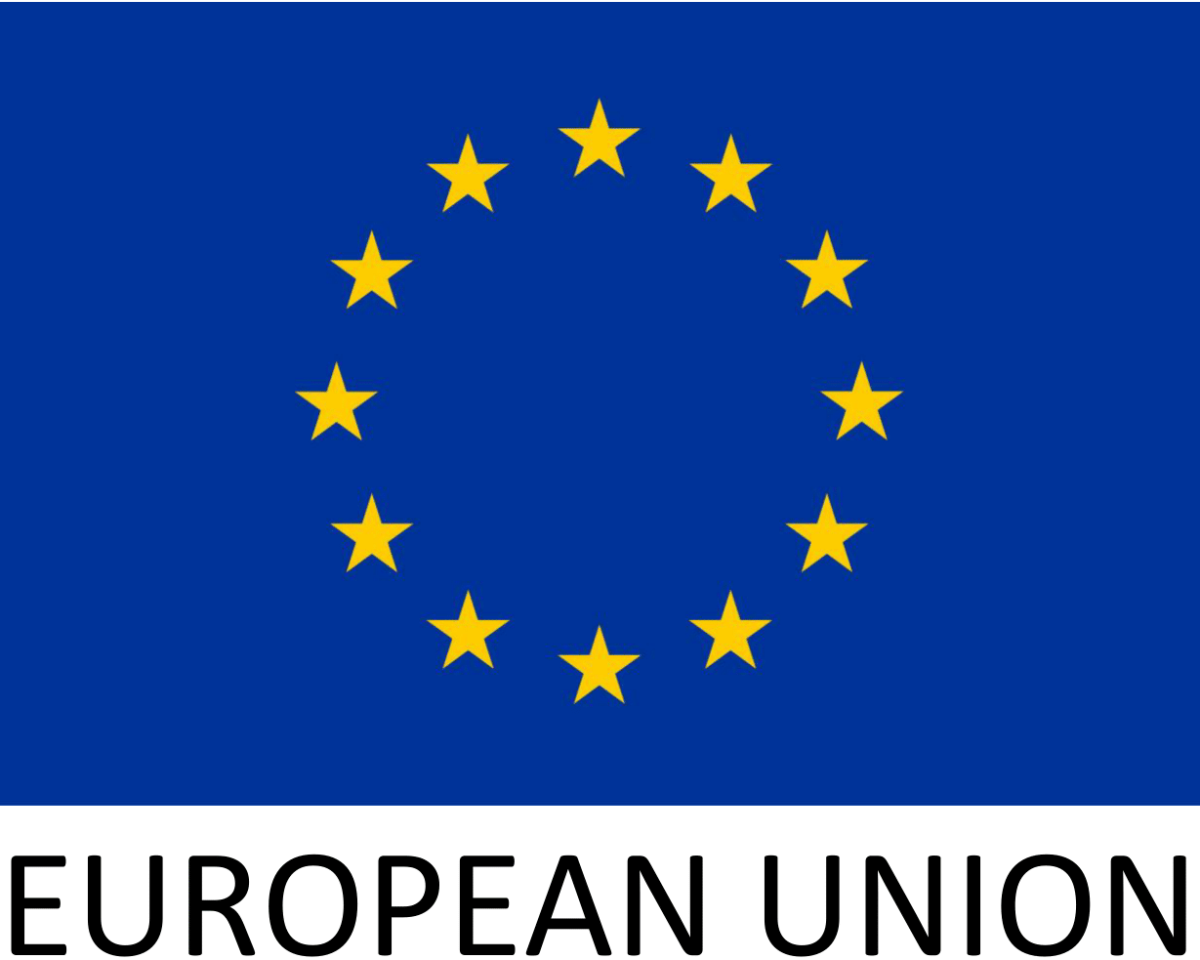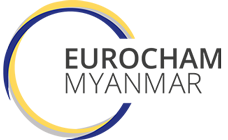Written by Zar Chi, SMART Myanmar Technical Assistant for Sustainable Consumption & Production
Some factories in Myanmar are accustomed to the “5S” approach – Sort, Set, Shine, Standardize and Sustain). The SMART Myanmar team sometimes uses this approach as a guiding framework to achieve safer and healthier working conditions for Myanmar factory workers. For “5S”, SCP Technical Assistants visited several garment factories and assessed the entire production process, from the fabric warehouse to the finishing department.
In February, myself and another SCP Technical Assistant from SMART visited Cherry 1 garment factory in Hlaing Township to make a factory-specific “5S Improvement Recommendations Catalogue”. (Cherry I is one of two factories my colleague and I are responsible for working with, our other colleagues work with several additional factories.) First, we looked around the whole factory and took photos where we determined areas needed improvement. After that, we prepared a factory-specific “5S Improvement Recommendations Catalogue”. On the 17th of March, we presented the “5S Improvement Recommendations Catalogue” to the factory’s production manager and gave hard copies of this catalogue, both in Myanmar language and English.
On April 27th 2015, we followed up on their improvements progress according to the recommendations in the catalogue. In barely over one month, they have improved several points. For example, in the cutting department, they previously they kept the old patterns mixed with pattern paper wastes under the cutting table. After that, they took out the old pattern separately and cleaned under the cutting tables.
Cutting Department
Not only the cutting department but also housekeeping system, production lines, unused machine covers and electrical safety equipment have all been improved upon. We can see the improvements by comparing the before and after of housekeeping system. These point are quick fixes for the factory, for which they do not need to invest any money. Also for the production lines, there used to be a lot of plastic boxes and plastic seats which blocked the way between the sewing lines. The factory management took out the things which blocked the way and cleared the walk ways. Not only is this better for factory efficiency, but it is essential for improving fire safety.
Housekeeping
Production Lines
Previously they had placed the electrical distribution box near the water container which belongs to the ironing department. This electrical distribution box’s door was generally kept open and there was no proper work space for the ironing operators. This was extremely dangerous and created a significant risk of an electrical fire. After receiving the improvement recommendation from SMART Myanmar, the factory manager moved the water container away from the electrical distribution box and the electrical distribution box’s door is now always closed for safety.
Finally, the factory has started a procedure of covering unused machines to prevent dust from damaging the machine and to protect passing fabric bundles from being stained from unused machines.
Electrical distribution box in the ironing department
Unused Machines without & with covers
Conclusion
To summarize about the improvements, the factory has improved in recognizable ways after slightly more than one month. Most of the suggestions did not require investment capital and we can already see the improvements in workplace safety and productivity.
After our 1st follow-up, we will continue with a 2nd follow-up in the future to ensure progress is sustained. This is one of the many activities my colleagues and myself are supporting as part of the SMART Myanmar team.


